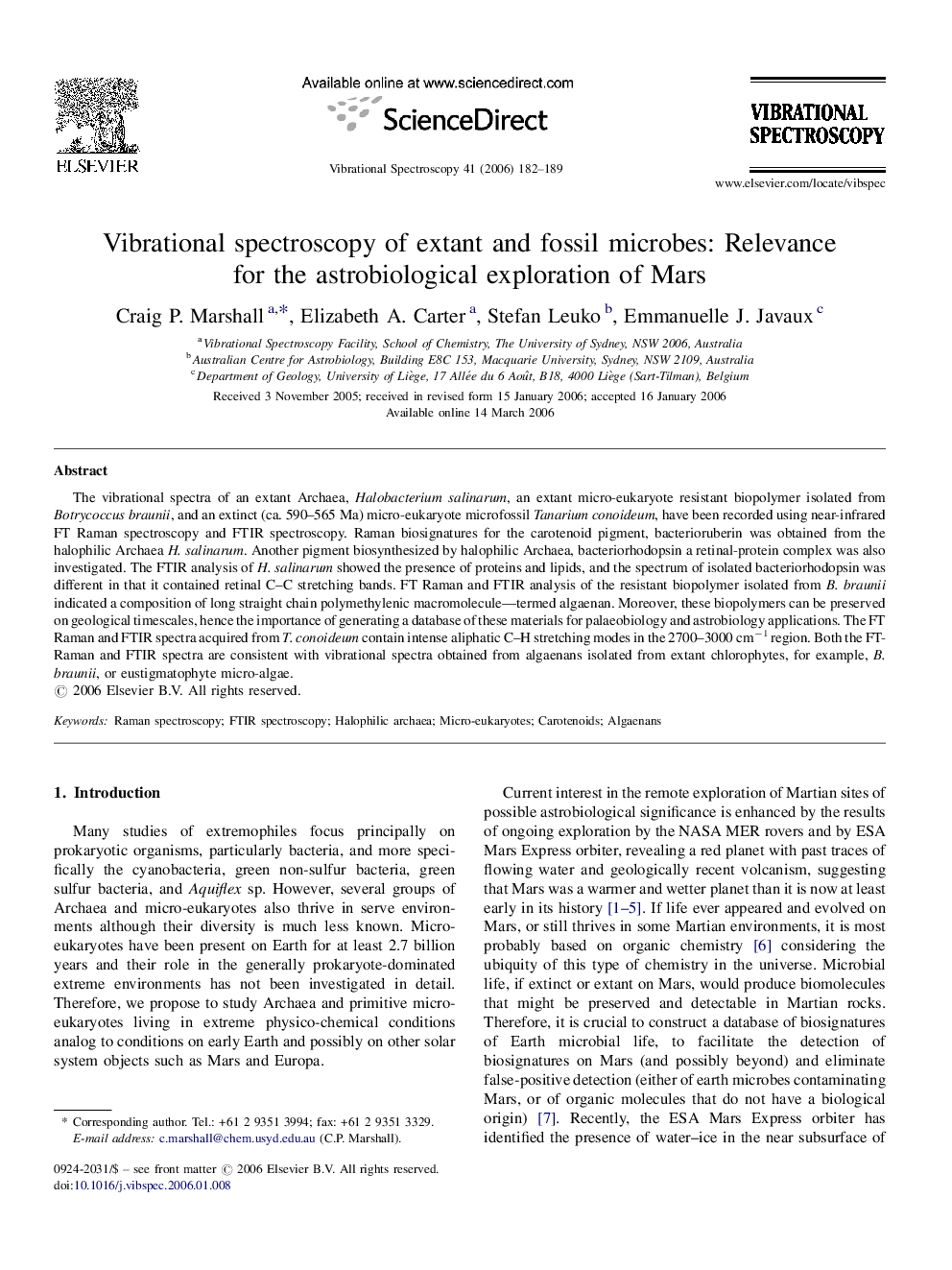| کد مقاله | کد نشریه | سال انتشار | مقاله انگلیسی | نسخه تمام متن |
|---|---|---|---|---|
| 1250125 | 970782 | 2006 | 8 صفحه PDF | دانلود رایگان |

The vibrational spectra of an extant Archaea, Halobacterium salinarum, an extant micro-eukaryote resistant biopolymer isolated from Botrycoccus braunii, and an extinct (ca. 590–565 Ma) micro-eukaryote microfossil Tanarium conoideum, have been recorded using near-infrared FT Raman spectroscopy and FTIR spectroscopy. Raman biosignatures for the carotenoid pigment, bacterioruberin was obtained from the halophilic Archaea H. salinarum. Another pigment biosynthesized by halophilic Archaea, bacteriorhodopsin a retinal-protein complex was also investigated. The FTIR analysis of H. salinarum showed the presence of proteins and lipids, and the spectrum of isolated bacteriorhodopsin was different in that it contained retinal C–C stretching bands. FT Raman and FTIR analysis of the resistant biopolymer isolated from B. braunii indicated a composition of long straight chain polymethylenic macromolecule—termed algaenan. Moreover, these biopolymers can be preserved on geological timescales, hence the importance of generating a database of these materials for palaeobiology and astrobiology applications. The FT Raman and FTIR spectra acquired from T. conoideum contain intense aliphatic C–H stretching modes in the 2700–3000 cm−1 region. Both the FT-Raman and FTIR spectra are consistent with vibrational spectra obtained from algaenans isolated from extant chlorophytes, for example, B. braunii, or eustigmatophyte micro-algae.
Journal: Vibrational Spectroscopy - Volume 41, Issue 2, 30 August 2006, Pages 182–189